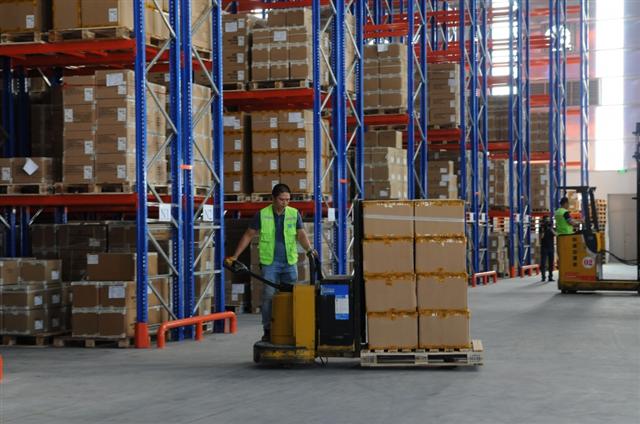Vietnam seeks to ease logistics bottleneck hurting competitiveness
Vietnam seeks to ease logistics bottleneck hurting competitiveness
According to economic experts, high logistics costs increase Vietnam’s commodity prices compared to those of other countries, reducing the competitiveness of domestic manufacturers and of the economy.

High logistics costs reduce the competitiveness of Vietnamese enterprises
|
Logistics costs 17 percent of GDP
The logistics industry plays an important role in the supply chain and commercial services, improving the competitiveness of enterprises and the economy, especially in the context of Covid-19.
The Vietnam Logistics Business Association (VLA) says Vietnam has about 4,000-4,500 enterprises providing direct logistics services and more than 30,000 related companies, of which more than 90 percent are small and medium-sized enterprises. According to VLA’s research, logistics costs in Vietnam account for about 16.8-17 percent of the country’s GDP and are high compared to those in surrounding countries, while its contribution to the GDP is only about four percent.
Vu Duc Giang, President of the Vietnam Textile and Apparel Association, said that Vietnam’s logistics costs are six percent higher than Thailand’s, seven percent higher than China’s, 12 percent more than in Malaysia and three times higher than Singapore. This has reduced the competitiveness of domestic textile products compared to other countries in the region even though Vietnamese labor is relatively cheap. High logistics costs not only affect the competitiveness of goods, but are an obstacle for businesses entering new markets.
At the Vietnam Business Summit 2020 held recently by the Vietnam Chamber of Commerce and Industry (VCCI), Chairman of the VLA Le Duy Hiep said that Vietnam’s logistics costs including storage, packaging, warehousing, transport and customs clearance add up to high costs and thus reduce investment attraction and competitiveness of domestic goods. “We are trying to pull logistics costs down to about 14-15 percent of GDP,” said Le Duy Hiep. VCCI
Chairman Vu Tien Loc said logistics are the heart of the economy, determining the competitiveness of each country and each enterprise. A strong logistics industry is the key for Vietnamese participation in the global value chain. However, the logistics industry is a bottleneck of development due to the high costs.
Better policies and infrastructure required
According to VLA, the international transport capacity of the Vietnamese logistics industry is still very weak. For example, there is no shipping company that can undertake the transportation of domestic goods to the international market, while the development of air cargo transport remains slow.
“The government understands this bottleneck and is providing support for logistics enterprises. For their part, businesses have also recognized the need for new technologies to meet the requirements of e-commerce, automation in warehouse management as well as further development of urban logistics with strong support of digital technology,” Hiep said.
VCCI Chairman Vu Tien Loc also agreed with this viewpoint, saying Vietnam needs to overcome this bottleneck and create a breakthrough in logistics development through the application of information technology and digitization. About 40 percent of logistics enterprises have applied digital transformation, among them pioneering enterprises such as Cat Lai port that has applied electronic customs clearance and other services.
However, state management agencies need to complete logistics development policies and mechanisms, including the formation of leading logistics service enterprises, application of new technologies in logistics activities, development of road, railway, seaport, and airport infrastructure, and facilitating the development logistics services in order to improve the competitiveness of the economy.
| Eighty percent of the logistics market share in Vietnam is currently in the hands of foreign firms and the remaining belongs to about 3,000 domestic firms. The market size is large, but the logistics industry’s contribution to annual GDP is low to due to the high costs. |






















